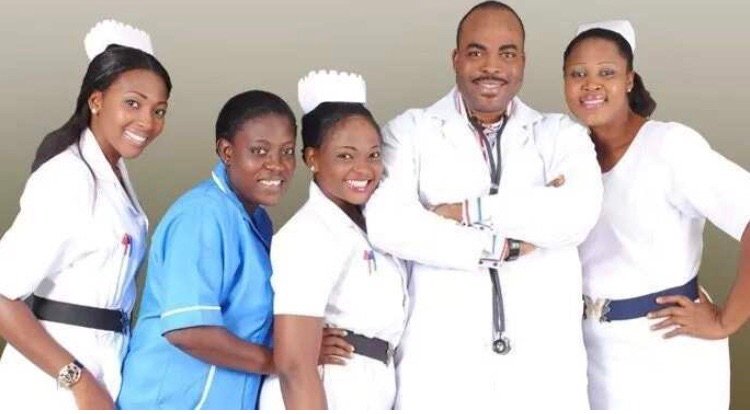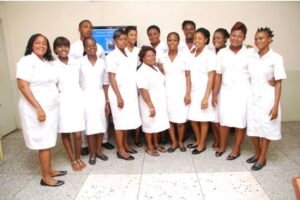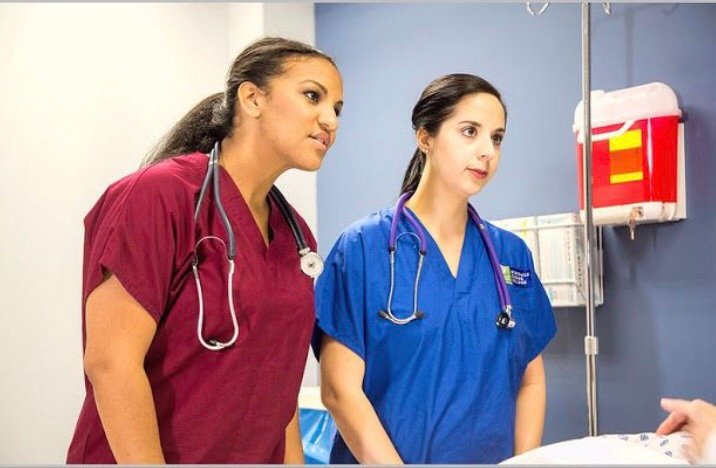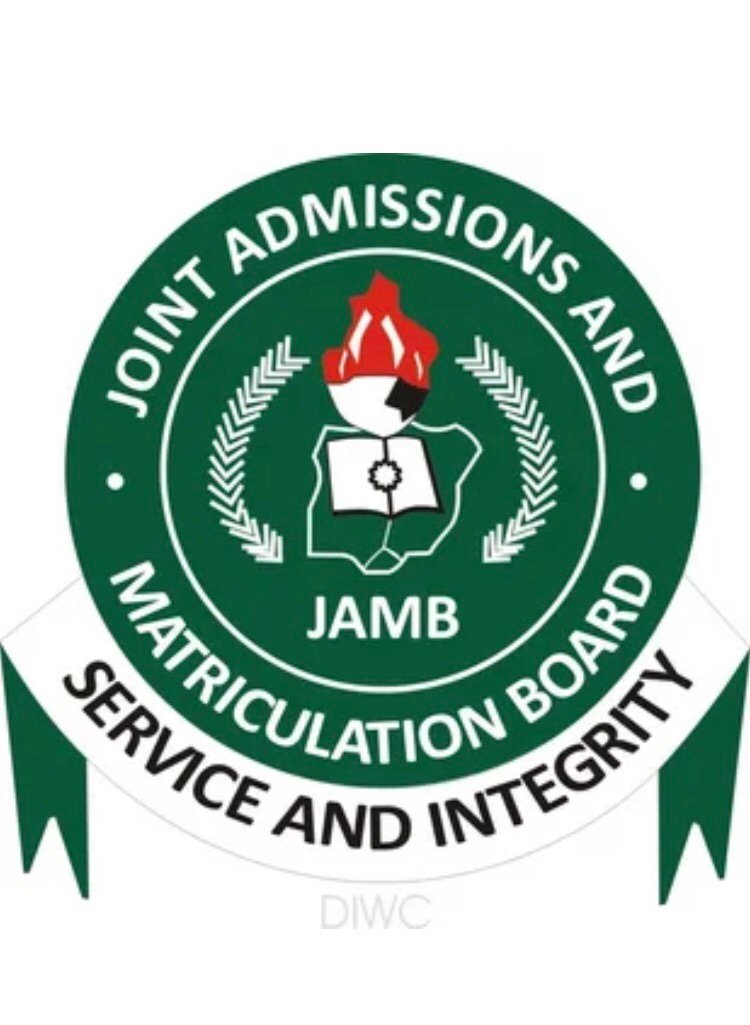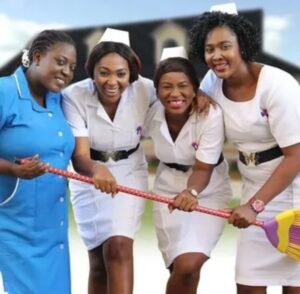All the Nursing Schools in Imo State are under the Nursing and Midwifery Council of Nigeria. For anyone who wishes to become a registered nurse in any Nursing Schools in Imo State, the person must complete an accredited nursing program and pass the Nursing and Midwifery Council of Nigeria licensing examination with any Nursing School of his/her choice.
Several Ways To Become A Nurse:
- Diploma in Nursing: This is a 3-year program offered at colleges of health technology. Graduates of this program are awarded a Diploma in Nursing and are eligible to take the council licensing exam.
- Bachelor of Nursing Science (B.N.Sc.): This is a 4-year program offered at universities. The graduates of this program earn a B.N.Sc. degree and they are eligible to take the licensing exam. In some schools, they offer part-time programs for working nurses.
- Post-Basic Nursing programs: This is a program for nurses who already hold a diploma or degree in nursing. It actually leads to a Bachelor’s or Master’s in Nursing.
How To Gain Admission In Nursing Schools In Imo State
To gain admission into any nursing school in Imo State, the applicant must have written and passed the West African Senior School Certificate Examination or Senior Secondary School Certificate with 5 credits such as credit in English, Mathematics, Physics, Chemistry, and Biology in not more than two sittings.
Nurses In Imo State Nursing Schools
Nurses in Imo State Nursing Schools aim to be nurses who produce high-quality care, lead change, and advance health in diverse settings. Nursing schools incorporate practical experience, internships and community health projects into their curriculum. With a strong nursing education, dedicated students in Imo State can build a rewarding career helping others.
List Of Nursing Schools In Owerri, Imo State
1. Imo State College of Nursing and Midwifery, Orlu
Imo State College of Nursing Sciences Orlu was established in 2013 and received its full accreditation from the Nursing & Midwifery Council of Nigeria (NMCN) in 2018 for the award of a Registered Nurse Certificate.
Imo State College of Nursing Sciences Orlu has recorded 100% passes in the council examinations consistently giving their graduates honor and making them more competitive in the Nursing Field.
The application fee for 2024/2025 is #18,500 and you can apply online.
Location: G299+JM9, Owerri – Orlu Rd, Amakohia-Akwakuma, Owerri 460116, Imo state.
2. St. Joseph College of Nursing Sciences, Mbaise
St. Joseph College of Nursing Sciences is a great renowned nursing institution committed to delivering excellent student experiences and innovations in nursing education and research. The school offers general nursing and basic midwifery programs. Their students are exposed to state-of-the-art facilities including ultra-modern classrooms, a demonstration skill lab, an esteemed library, and a world-class ICT center.
At the successful completion of the program at St. Joseph College of Nursing Sciences, you will be eligible to register with the Nursing & Midwifery Council of Nigeria as a Registered Nurse (RN).
Location: Umuokele Enyiogugu, Aboh Mbaise LGA Imo State, Nigeria.
Contact: 0812-527-8809, 0813-501-3491. email: info@sjcollegeofnursing.org
3. Imo State University (IMSU)
The Imo State University Department of Nursing offers 5-year bachelor’s program and a 2-year Master’s nursing program. To be eligible for nursing admission into Imo State University, you must hold WASC/GCE/NECO/SSCE or equivalent with at least 5 credits in Eng, Maths, Bio, Phy, and Chem.
IMSU Department of Nursing is located in Orlu, Imo State. Admitted students finish their first-year program in the Owerri main campus before moving to the Orlu campus. The school admits both regular and direct-entry students who meet the outlined requirements for their nursing program.
Location: Owerri, Imo State
4. Ezeala School of Nursing Sciences
Ezeala School Of Nursing Sciences is among the best nursing schools in Imo State and is fully accredited for the Basic Nursing program, by the Nursing And Midwifery Council Of Nigeria therefore is qualified to write the R.A. and R.M. examinations. It is the first nursing polytechnic in southern Nigeria and the first A&E program in Nursing sciences, East of the Niger.
Programs offered at Ezeala School of Nursing Sciences include Nursing, Midwifery, Post Basic Midwifery, Post Basic Accident and Emergency and Public Health. The School enjoys 24-hour solar-generated power and an uninterrupted pipe-borne water supply.
Location: Orlu-Owerri Road Umuseke-Okwudor. Njaba L.G.A Imo State
Contact: 08036712397, 07038088873 Email: ezealacnm@gmail.com
5. College of Nursing Sciences, Mbano.
College of Nursing Sciences Mbano (CONSMBANO) is a private nursing institute established in 2019. The College offers Nursing, Health Nursing, and Midwifery programs. CONSMBANO Nursing and Midwifery programs are accredited by the Nursing and Midwifery Council of Nigeria (NMCN) or the award of RN diploma certificate, and the Health Nursing program is accredited by the West African Health Examination Board (WAHEB).

College of Nursing Sciences Mbano application fee for the 2024/2025 admission is #18,500 for Basic Midwifery & POST Basic or N25,000.00 for a National Diploma (ND) in nursing. Interested applicants can apply online
Location: Umuduru Isiala Mbano, Imo State, Nigeria.
Contact: 09060288522. Email: info@consmbano.edu.ng
6. College of Nursing Sciences Amaigbo
The College of Nursing Sciences Amaigbo (CONS AMAIGBO) application fee is #19,000, interested students can pay into the First bank account number, School of Nursing Amaigbo, 3061264161.
Location: Amaigbo, Imo State.
Contact: 07064682951, Email: contact@consamaigbo.com
7. Merit College of Nursing Sciences, Orlu.
Merit of College of Nursing Sciences (MCNS) Orlu is a world-class institution of higher education in Nursing science in the heart of Imo State. The school offers over 28 nationally accredited nursing courses including ethics and foundation of Nursing.
MCNS has six spacious innovative classrooms that are equipped with telemedicine technology, such as Zoom, Canvas, and Webinar learning platforms, a learning resource, and a skills acquisition center.
Contact: Email: info@meritcollegeorlu.org or studenthelp@meritcollegeorlu.org
8. Princess College of Nursing, Mgbirichi
Princess College of Nursing is a private nursing school in Imo State that offers a 3-year nursing education program with a combination of classroom and hands-on learning training. The school is accredited by the Nursing and Midwifery Council of Nigeria and it offers structured and academically rigorous programs that prepare healthcare professionals for in-demand jobs in their communities.
Princess College of Nursing has an education system designed to maximize your chance of success on the NCLEX exam.
Upon successful completion of the requirement of the General Nursing Education Programme and passing the Nursing and Midwifery Council of Nigeria Professional examination, graduates of Princess College of Nursing shall be awarded the General Nursing Certificate(RN).
9. Claretian University of Nigeria (CUN)
CUN School of Nursing was founded by the Claretian Missionaries in Nigeria and is dedicated to preparing and producing outstanding healthcare professionals in the following courses Public Health, Physiotherapy, and Nursing Sciences. The university offers a 5-year nursing program that prepares students to have a very deep understanding of various fundamental aspects of the nursing field.
At the of the program, graduates are awarded a Bachelor of Nursing Science degree.
10. College of Nursing Sciences Emekuku
Holy Rosary College of Nursing Sciences Emekuku is fully accredited by the Nursing and Midwifery Council of Nigeria, to run Nursing and Basic Midwifery Courses. These courses have 36 months (3 years) duration.
11. Our Lady of Mercy Nursing School Umulogho
Our Lady of Mercy Nursing School Umulogho is a nursing school in Imo state that offers nursing, midwifery, and a two-year post-basic nursing program. application for 2024/2025 admission is out, call the number below to purchase yours.
12. International Christian College of Nursing Sciences, Owerri
International Christian College of Nursing Sciences, Owerri, is a Mission teaching hospital that offers a nursing program for both male and female students. The school prepares its students to become competent Registered nurses by providing them with a supportive, creative, and professional medical environment where they learn practical skills, gain real-world experiences, and build a network of industry contacts.
Their classrooms are built on an international standard for students to learn better through their nursing education. International Christian College of Nursing Sciences offers Basic nursing programs, 3 years Basic midwifery programs, and entrepreneurship programs.
13. School of Basic Midwifery, Aboh Mbaise
Contact: 09037603426, 09037603426.
Admission Requirements In Nursing Schools In Imo State
To gain admission into a nursing school in Imo State, you will typically need:
- Five credits in Mathematics, English, Biology, Chemistry and Physics at O’level.
- A minimum JAMB score, which varies by school but is often around 220.
- To sit for and pass an entrance exam for the specific nursing school.
- References from a medical professional.
- Proof you meet the minimum age requirement, which is usually around 18 years old.
Programs Offered In Nursing Schools In Imo State
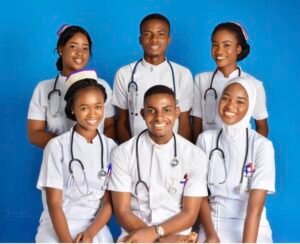
Nursing schools in Imo State offer several program options:
- Registered Nursing (RN) – A 3-year diploma program to become a registered nurse.
- Bachelors of Nursing Science (B.N.Sc.) – A 4-year degree program.
- Post-Basic Nursing – For those with a diploma in nursing to earn a B.N.Sc. degree. Usually 2 years.
- Masters in Nursing Science (M.N.Sc.) – For B.N.Sc. degree holders to specialize in areas like community health, education or administration. Usually 2 years.
Nursing Tuition Fees In Imo State
Tuition and fees for nursing schools in Imo State vary depending on the programs and schools. For private schools, tuition is often around ₦700,000-₦1,000,000 per year. Public schools typically charge ₦150,000-#200,000. Additional fees for registration, exams, lab use, etc. will also apply, usually totalling ₦20,000-₦50,000 per year.
Cheapest School Of Nursing In Imo State.
The cheapest school of nursing in Imo State is Imo State University, followed by Imo State College Of Nursing Sciences and Midwifery Orlu. These are the two cheapest Schools of Nursing in Imo State because both of them are government-owned schools of nursing in Imo State.
Which University Offers Nursing In Imo State?
It’s only Imo State University (IMSU) that offers Nursing in Imo State. Although, the Federal University Of Technology Owerri (FUTO) has started offering medical courses but looks like Nursing Science is yet to be accredited.
Best Nursing School In Imo State
Believe me, all the nursing schools in Imo State are the best. This is because Imo State is one of the States in Nigeria that loves School and education. So, all the schools including nursing schools have the best teachers. It depends on your choice and the one you can afford.
Most Expensive School Of Nursing In Imo State
College of Nursing Sciences, Emekuku remains the most expensive school of nursing in Imo State because it is owned by a Church.
School Of Nursing In Imo State Without Jamb
College of Nursing Mbano was not using Jamb for admission, but they started recently. Schools such as Our Lady College of Nursing School, Umuloghbo, School of Basic Midwifery, Aboh Mbaise, International Christian College of Nursing Sciences, Owerri, Claretian University of Nigeria (CUN), Princess College of Nursing, Mgbirichi, Merit College of Nursing Sciences, Orlu, St. Joseph College of Nursing Sciences, Mbaise, etc do not require Jamb for admission.

